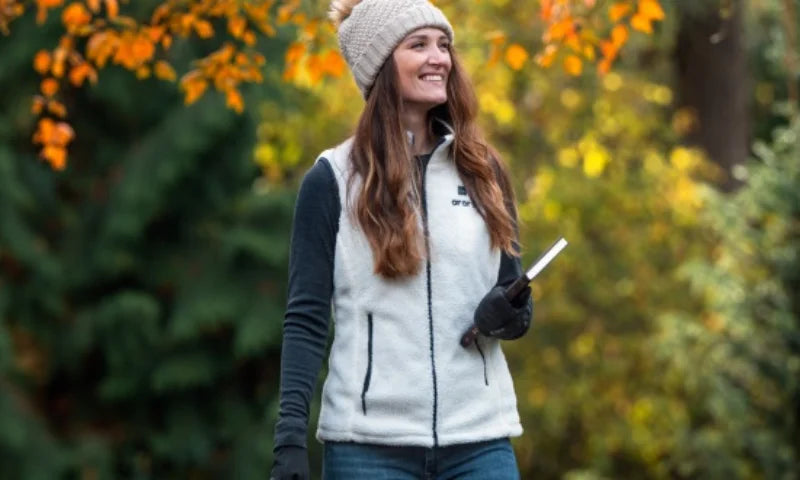Machu Picchu - Your Lifetime Adventure!

By: Stephanie M
After 25 years, my deepest dream finally came true… visiting Machu Picchu, one of the Seven Wonders of the World! This breathtakingly beautiful archaeological site, dating back to the 1450s, is located in Peru, South America.
My curiosity about indigenous cultures started back in the late 1990s. My best friend in Wisconsin lived in a white, two-story farmhouse built at the turn of the 20th century. Sitting on a large wooded acreage was a small cottage where an Inca Priest (also known as an Inca Shaman) resided with his family.
From Peru, this Inca Priest held spiritual ceremonies including regular sweat lodges - a hut made from saplings and covered with blankets or animal skins - for prayer and healing. These ceremonies piqued my interest in the spiritual indigenous ways of Peru.
Years later, I began to study Peruvian Mysticism with a North American teacher in Northern Minnesota. In 2024, we decided as a group to make the long trek across two continents to reach Machu Picchu.
Now, let me take you on a journey to discover this spectacular gem in South America!
Machu Picchu Prelude
First, a little history lesson on this most fascinating destination. The location of Machu Picchu was never revealed to the Spanish colonizers and was not “discovered” by the outside world until the explorations of Hiram Bingham in the early 1900s. This 15th-century Inca citadel sits at an altitude of 7,972 feet (2,430 meters) resting high above the river, Rio Urubamba.
Before planning my trip, I thought that the famous Peruvian city of Cusco was at the foot of Machu Picchu. But, oh, was I wrong! It turns out that Cusco is significantly higher in elevation than Machu Picchu and is a good four and a half hours by bus and train to Aguas Calientes, which is actually at the base of Machu Picchu.
My two travel companions (Sherry and Summer) and I started planning our Machu Picchu trip three months in advance. And we’re so glad we did! There were many more moving parts to get us there than we imagined. The many hours Summer spent researching paid off with few travel surprises and a memorable, fun-filled trip.
One of the most challenging and time-consuming parts of a trip to Machu Picchu is deciding which one of the four circuits we wanted to take. Machu Picchu offers four different hiking paths (circuits) and all visitors must choose which route they want to take to enter the archeological site. For excellent information about the circuits, please check out this link.
Getting to Machu Picchu Via Cusco and Aguas Calientes
We booked a Delta flight into Lima, Peru (the capital) with a starting point in the infamous town of Fargo, North Dakota. Spending one night in Lima in a basic, but comfortable, Airbnb, we woke up in the wee hours of the morning to return to the Lima airport to fly to Cusco via LATAM Airlines.
One word of caution- when we initially booked this flight on LATAM Airlines, they advertised a price at $198 round trip but after adding on necessities (luggage, seat assignments, taxes, etc.), we spent close to $330.
Our flight on LATAM was uneventful and took only about an hour. However, upon entering the airport, I immediately felt the effects of altitude sickness. Feeling light-headed and a bit winded, I experienced nervousness that I might pass out. Thankfully, I am trained in energy healing and was able to use this to help alleviate some of the symptoms.
While on the LATAM flight, we met fellow passengers who were using altitude sickness patches behind their ears and next to their belly buttons. We, unfortunately, did not have these patches but you can find them here on Amazon.
Cusco… A Welcoming Stop Along the Way To Machu Picchu

Thanks to Summer’s meticulous planning, a taxi awaited us when we landed in Cusco. Armando Agüero Hurtado provided a delightful ride to the town’s center, Plaza de Armas.
We had two hours to spare before the next leg of our trip so we had time to enjoy a relaxing lunch at Jack’s Cafe & Bistro with exquisite cuisine… scrumptious, creamy pumpkin soup and amazing gluten-free bread made using Teff Flour. We loved it so much that we went back to eat there again later on our trip.

Jack’s is definitely a popular tourist spot and don’t expect to see locals there, but I’d highly recommend it if you want tasty soups, salads, burgers, and sandwiches.
We only stayed in Cusco for a few hours on the first day there. But then we returned after our Machu Picchu trip for an amazing and enlightening 10-day stay at a spiritual retreat center, Pachananda.
If you’re staying in Cusco for more than a day or two, you may want to check out these five spots:
- Inkilltambo. The Inkilltambo hike, just 20 minutes outside of Cusco, is well worth a visit. If you are eager to visit all the beautiful Inca ruins that surround Cusco, you can even connect the Inkilltambo hike to the Inca ruins of Sacsayhuaman, Quenko, Pukapukara, and Tambomachay.
- Humantay Lake. One of the most beautiful and sacred lakes in Cusco, its turquoise waters sit among the snow-capped mountains of Salkantayo. From Cusco, the 120 km by road is worth the time to see this picturesque lake.
- The Abode of the Gods. Also known as Apukunaq Tianan, this interesting adventure is only 12 kilometers by bus from Cusco. This is a complex of large stone sculptures, several reaching up to 8 meters in height, that depict Inca gods and culture.
- Mountain of the Seven Colors. Also known as Montaña de Siete Colores, Montaña de Colores, or Rainbow Mountain, this site is a geological wonder in the Andes of Peru. The mountain's striking colors are the result of minerals in the ground mixing with water from melting glaciers that covered the mountain until the early 1990s.
- Maras Salt Mines. Located just an hour away from Cusco these surreal salt ponds are hidden in the Sacred Valley. Locally, these mines are known as Salineras de Maras.
Our Journey from Cusco to Aguas Calientes
After a few hours in Cusco, we boarded the bus to Ollantaytambo, to continue on our pilgrimage to Machu Picchu. The most exciting portion of our Peruvian Trip was about to begin!
There are two trains that go to Aguas Calientes, the Inca Rail and the Peru Rail. Both offer magnificent rides along the Urubamba River and are in the Cloud Forest. We took the Inca Rail and were very happy with it, but also heard the Peru Rail was excellent.
During the rainy season (January to April), you can not take a train all the way from Cusco to Machu Picchu because of potential landslides during this season. Instead, you will take bimodal transport (a bus, then a train) to make the journey, which we found to be easy and comfortable.
Aguas Calientes - The Gateway to Machu Picchu

Aguas Calientes (also known as Machu Picchu Pueblo or Town), lies in a deep gorge below the Machu Picchu site. It is cut off from roads and is surrounded by stone cliffs, a cloud forest, and two rushing rivers - one being the Rio Urubamba. The only way to arrive in Aguas Calientes is by train or on foot via the Machu Picchu Inca Trail.
The footpath from the Aguas Calientes train station to the Machu Picchu bus stop has many steps but there is a way for wheelchairs to cross a small bridge through the center of town.
Despite its quaint location by the rushing river, Aguas Calientes has a distinct commercial feel with merchants and restaurant workers eagerly inviting tourists to sample their cuisine and purchase their crafts and wares. While the rushing river offers a soothing feel, the town, itself, detracts from the serenity that Machu Picchu offers.
If you enjoy hot springs, you’ll find some in Aguas Calientes. At 20 soles (about $7 USD), this is an inexpensive indulgence, despite being charged extra as an “extranjero” or “foreigner.” However, we arrived at midday to find lots of bugs, both in the air and in the water… not exactly the nicest touch. But you may find it a relaxing way to spend an hour or two. You can rent towels cheaply right outside the entrance at nearby shops.
There are several restaurants in Aguas Calientes that serve delectable Peruvian cuisine and overlook the amazing rapids of the beautiful Urubamba River. At Full House Peruvian Cuisine & Craft Beer and at Chullos Restaurant & Craft Beer, we enjoyed exquisite food with breathtaking views of the river.
Finding the Best Place to Rest for the Night in Aguas Calientes

Despite Aguas Calientes’ less-than-ideal atmosphere, I’d highly recommend spending at least one night there so you can feel rested and get off to an early start to Machu Picchu.
Sunrises at the archaeological site are touted as being exquisite if fog or cloud cover does not obscure the view. Please note all visitors (including those guests of the high-end Machu Picchu Sanctuary Lodge) are not allowed to view the panoramic sunset of Machu Picchu at the actual site because it closes at 5:30 PM.
There are plenty of inexpensive overnight options in town. Three of us shared one room at a basic hotel for less than $75 per night and the rushing nearby river helped lull us to sleep.
For those with deep pockets, the Machu Picchu Sanctuary Lodge (a Belmond Hotel), at the entrance to the archaeological site, is a great overnight option. Prices are steep (ranging from $1,900 to more than $3,300 a night) as it is an exclusive high-end hotel at a prime location.
Some of the amenities you’ll enjoy at the lodge are an on-premises spa, beautifully manicured gardens, and personalized Machu Picchu guide service. The Tampu Restaurant in the lodge is open for breakfast (5:30 to 9:30 AM) and lunch (12PM to 3PM) to non-guests depending upon availability. If you want to indulge in a room at the lodge with a mountain view, you’ll pay extra. We recommend booking your room three months or more in advance.
Journeying from Aguas Calientes to the Machu Picchu Site

You can either hike to Machu Picchu site from Aguas Calientes, a challenging 2 to 3 hours long journey or you can take a bus to Machu Picchu from town. Bus tickets can be purchased the day prior (you do not need to buy the tickets far in advance) in town at Av. Hermanos Ayar S/N, before the Puente Ruinas. Prices are $24 per person round trip.
You will need your passport to buy a bus ticket and to enter the Machu Picchu site so be sure to have this ready. (Please note that throughout Peru, local police frequently stop cars and pedestrians for proof of identity.)
The 25-minute bus ride is along a steep mountain road that has precipitous drop-offs at many points. The road in several parts is only wide enough for one bus. So if you are nervous about this type of ride, best to keep your eyes straight ahead as you traverse up the mountain.
Tickets to enter Machu Picchu need to be purchased well in advance (ideally three months or so) and there are 4 walking circuits from which to choose. Summer and Sherry took Circuit 2 which was a more arduous walk than Circuit 4, which is the one I took.
Plan to be on your circuit for about 2-3 hours. And beware that there are no bathrooms on the actual site and you can not leave and return back if you are in need of a restroom. So take advantage of the facilities at the entrance to the site. It’s a mere 2 soles (75 cents) and you’ll be able to enjoy the site worry-free.
Drum Roll… Visiting the Machu Picchu Site!

It is 8PM on a beautiful Saturday night in Aguas Calientes. My two traveling companions and I are back at our hotel room for an early-to-bed night. We carefully pack our small rucksacks, choosing only those items that are must-haves for our hike, based on what we thought we could or could not take into the archeological site.
Our alarm sounds the next day at 5 AM. We woke up, both excited and nervous, about the day ahead, and also relieved to find the rain from the middle of the night had stopped.
My two traveling companions leave 30 minutes before I do as they are doing Circuit 2. Despite my trepidation, the bus ride navigating the scary mountainside was not as frightening as I anticipated. I was able to chat in Spanish most of the way up with my local guide.
I, being uncomfortable with steep climbs and heights, and also having problematic knees, chose Circuit 4. The vast majority of this route was flat and easy with only a few steps… in some places 30-40 at a time. I did see a wheelchair user on that circuit; you can find out more about wheelchair use here.

Be aware that Machu Picchu does not allow umbrellas, tripods, selfie sticks, walking sticks, or poles (unless for a disability). We were told water, food, bug spray, and sunscreen were also not allowed but we carried these items onto the site with no problem. Many people at the site had water bottles or health food/granola bars with them, also.
Be sure to leave no trace… what you pack in, pack out. Please be gentle with this magnificent historical site!
Machu Picchu’s Mercurial Weather Demands the Best in Outerwear…
Your ororo Options
Machu Picchu is known for heavy rains, cloudy skies, and hot burning sun. Also, sand fly-like bugs exist and, supposedly, mosquitoes, as well. Have your bug spray handy and also be prepared for the sun due to high elevation. My brimmed hat kept me safe from overexposure and I highly recommend one for both men and women.
Year-round temperatures in Machu Picchu can dip into the 40s and 50s, with the coldest temperatures in the winter (May to September.) On these cooler/cold days, have your ororo heated gear at-the-ready! Providing comfort without distraction from the cold, ororo has multiple outerwear options for making your Peruvian experience nothing short of amazing.
Consider these ororo options:
1. Our Classic Heated Vest is perfect for the colder days in Machu Picchu. You’ll love its versatility… wear it above a long-sleeved shirt or sweater or under a lightweight jacket and it is water and wind-resistant. Check out our Men’s Classic Heated Vest and Women’s Classic Heated Vest. You can either buy either of them in our classic black color or search on our website for a variety of other colors in this style.
2. Our Classic Heated Jacket is perfect if you would prefer a jacket, instead of a vest. For Men or for Women, this hip-length jacket is water and wind-resistant… just right for your Machu Picchu adventure. Available in classic black color or search on our website for current availability of other colors!
3. Our Unisex Fleece Hoodie is also another great option for your journey to Machu Picchu. Consider this fleece in black or this hoodie in flecking gray. If you begin your day at Machu Picchu with colder temperatures, you can wear this hoodie heated. As the day warms up, you can turn off the heat or even remove the hoodie and easily store it in a small backpack.
4. And on those warmer days when temperatures are in their 60s or higher consider wearing our Quick-dry ororo T-shirt or Hoodie. And if you are in our rewards program and have accumulated 800 heated heated points or higher, you can redeem a Challenge the Climate Cap to help protect your face from the intense sun.
Traveling with ororo Heated Apparel
All our ororo batteries are TSA-friendly for your flight to Peru. Please remember that, like laptops and camera batteries, all ororo batteries are lithium-ion batteries and must be carried in your carry-on luggage. You can learn more at the Federal Aviation Administration's Pack Safe for Passengers policy.
Summary
Visiting Machu Picchu will likely be a once-in-a-lifetime adventure for you! We hope this post has given you plenty of information to make it a smoother, more enjoyable trip… and may your memories of Machu Picchu be filled with joy, grace, and beauty.







